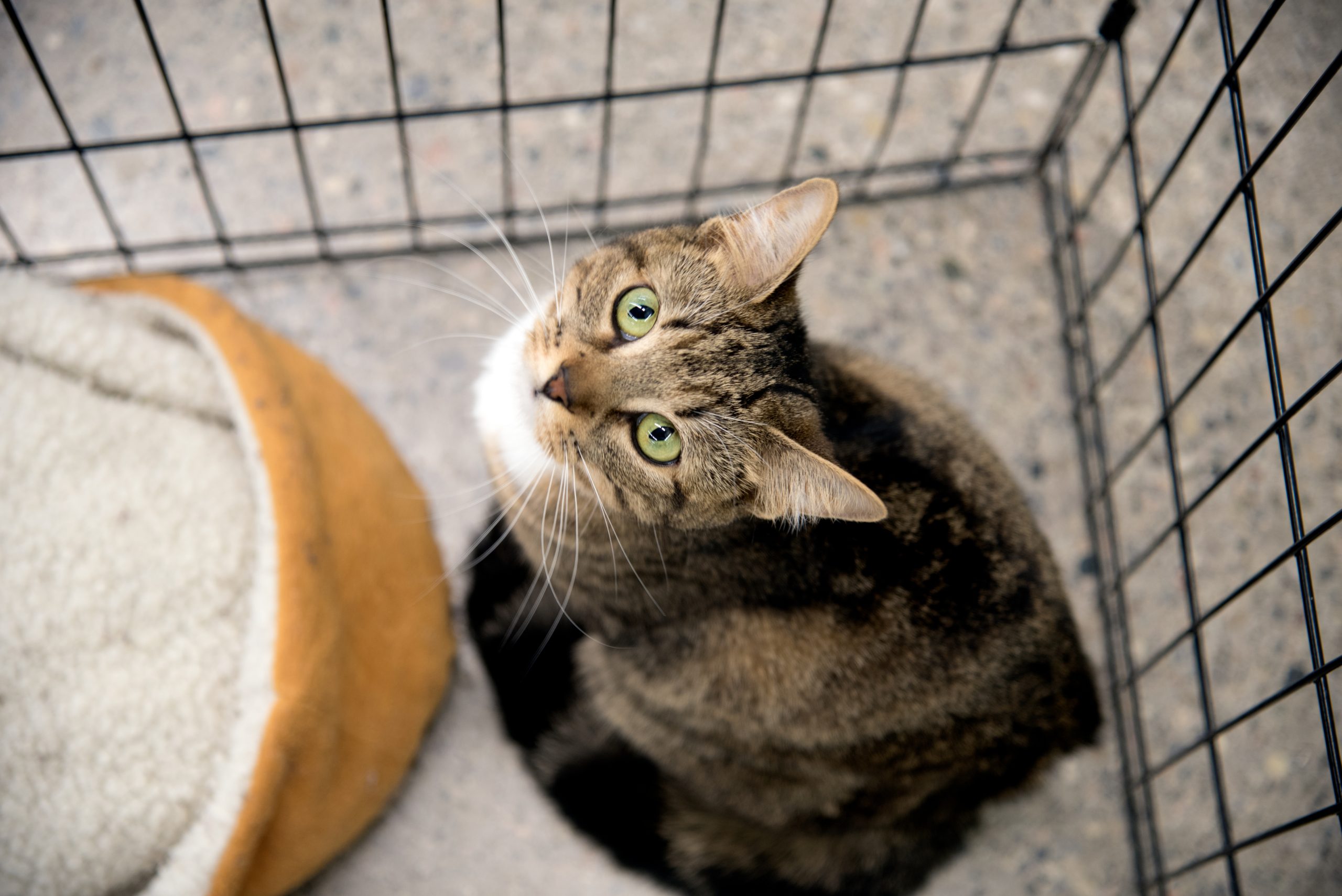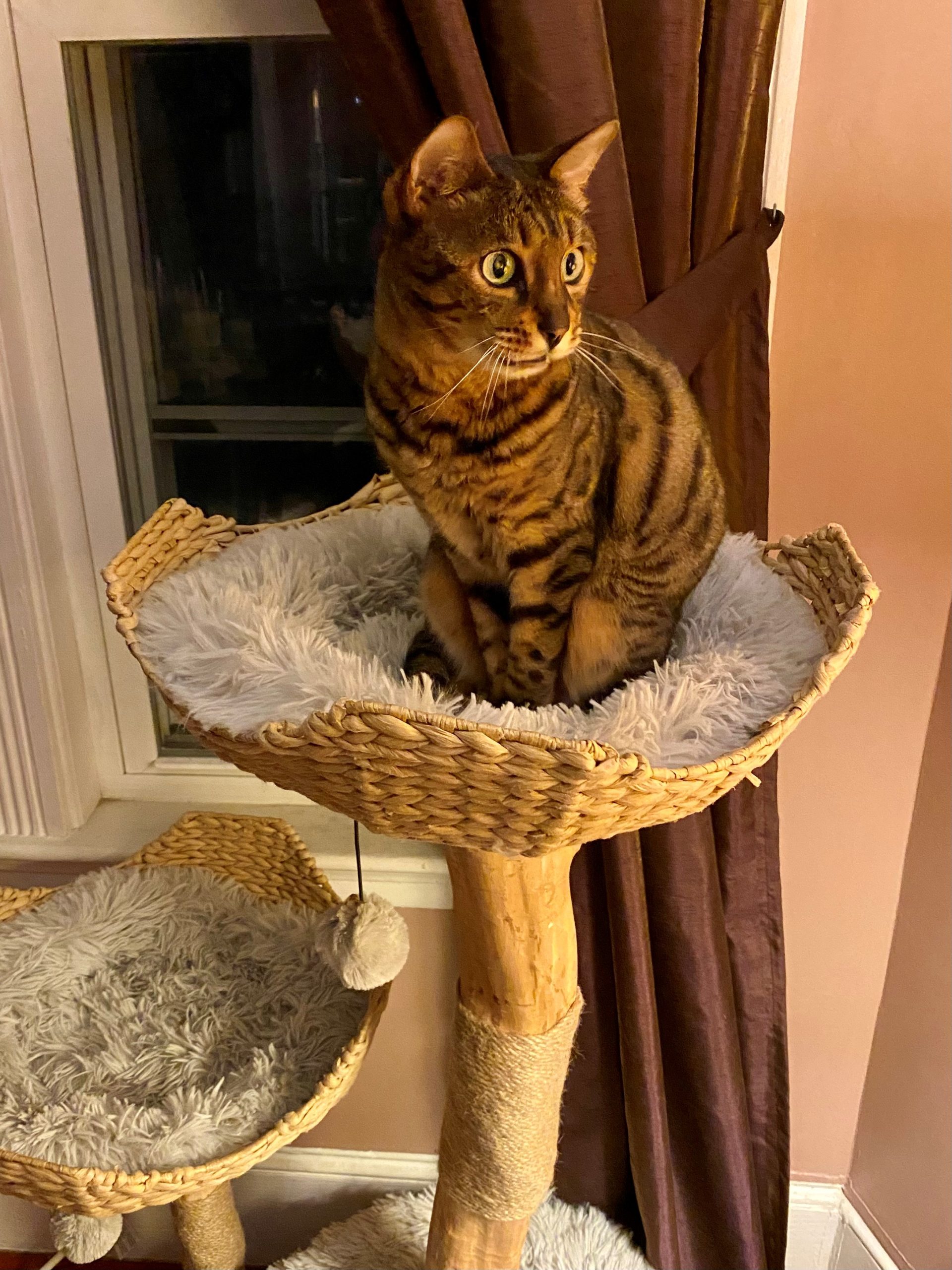-
Adopt
-
Veterinary Care
Services
Client Information
- What to Expect – Angell Boston
- Client Rights and Responsibilities
- Payments / Financial Assistance
- Pharmacy
- Client Policies
- Our Doctors
- Grief Support / Counseling
- Directions and Parking
- Helpful “How-to” Pet Care
Online Payments
Referrals
- Referral Forms/Contact
- Direct Connect
- Referring Veterinarian Portal
- Clinical Articles
- Partners in Care Newsletter
CE, Internships & Alumni Info
CE Seminar Schedule
Emergency: Boston
Emergency: Waltham
Poison Control Hotline
-
Programs & Resources
- Careers
-
Donate Now
What’s better than summer around the corner? Why, cats lounging in the summer sun, of course!
 However, in the animal shelter world, this time of year is called “kitten season,” when thousands of wiggly cute kitties are born and often (unfortunately) brought to the already overcrowded shelters and foster groups.
However, in the animal shelter world, this time of year is called “kitten season,” when thousands of wiggly cute kitties are born and often (unfortunately) brought to the already overcrowded shelters and foster groups.
June is National Adopt a Cat Month, and the MSPCA-Angell has plenty of cats and kitties for the choosing. If there was ever a time for you to be kitten-smitten and give a little furball a new home, now is the time to do it. We spoke with Cade Jerome, Assistant Manager of Animal Care at the MSPCA-Angell, for advice and tips on adopting a new feline friend.
Before you adopt a cat
There are some things you should consider before bringing home that little kitten or cat. “There is a time commitment when caring for cats that people should weigh,” explained Jerome. Cats can live for quite a long time (often up to 12 years or more), and depending on the cat, you may get one that needs to be with you 24/7, and then you may find one that doesn’t need you at all. “But minimally, a new cat owner should have enough time to spend with the cat and care for them daily – or at least have a good plan for when they’re not around and have someone else care for them in their absence.”
Luckily, shelters like the MSPCA-Angell can help take the guesswork out of which cat or kitten is best for your lifestyle. “We can help with that matchmaking process depending on various factors, including time commitment, lifestyle, and personality,” reassured Jerome.
Below are some additional points to think about before adopting a cat:
- Your day-to-day lifestyle – do you work full-time or have a hybrid work-from-home situation?
- Do you have children (or thinking about having them)?
- Think about other animals who are already in the home – or those you may want to have further down the road
- How big or small your living space is – will your new cat have enough room to feel comfortable?
- What age do you want? Kittens will need all the necessary training and a lot of attention, while older cats are usually more independent, requiring less supervision
- Also to consider: if you have children, adult or senior cats are generally better suited to be handled by curious toddlers (with intervention from you if the toddler is too rough with the cat)
- What type of personality should the cat have – do you want an easy-going cat who likes to cuddle? Or do you prefer an active cat who likes to play a lot? You may want to take her out for walks using a harness and leash. (Some cats do enjoy that!)
The meet and greet
You see the cutest cat at the shelter and want to meet her and see if there’s a connection. If you’re an experienced cat owner, you’d feel comfortable approaching and handling a cat. But it can be a little intimidating for those new owners not accustomed to being around them. “When you first approach a cat, it may be tempting, but you should avoid reaching your arm out or holding your hand in a cat’s face,” explained Jerome. “While you think you’re being friendly, the cat will see you as threatening.” Instead, give the cat time to observe you and then approach you slowly when she chooses. “Always remember to use small, slow moments when interacting with a new cat to avoid startling them, and let them approach you,” he added.
approaching and handling a cat. But it can be a little intimidating for those new owners not accustomed to being around them. “When you first approach a cat, it may be tempting, but you should avoid reaching your arm out or holding your hand in a cat’s face,” explained Jerome. “While you think you’re being friendly, the cat will see you as threatening.” Instead, give the cat time to observe you and then approach you slowly when she chooses. “Always remember to use small, slow moments when interacting with a new cat to avoid startling them, and let them approach you,” he added.
Jerome encourages potential cat owners to visit the MSPCA-Angell Boston shelter during open adoption hours, from 12 pm to 3 pm, Tuesday through Sunday. (Click here for information/hours for other MSPCA-Angell shelter locations.) “We have volunteers to help with matchmaking,” said Jerome. Most of the time, new owners want to see what sort of cats are available for adoption and then approach a volunteer or staff member to have the matchmaking conversation. Staff walk new owners through basic counseling of bringing the cat home, review any medical needs, and address any additional questions depending on their circumstances.
“It’s usually a same-day adoption process here,” said Jerome. “Sometimes it may take longer because the adopters are first-time cat owners. But generally, if someone finds a cat or kitten they like and there aren’t any barriers or reasons why it might not be a good match for them or the cat, the adoption process can move forward and be finalized.”
Preparing your home for a new cat
 The number one way to prepare for a new cat: provide her with a quiet space. “It could be a spare bedroom or a bathroom, but be sure to give your new cat its private area,” explained Jerome. “Space is important because it’s a big adjustment just going from one space to another. And the transition can be stressful on animals.”
The number one way to prepare for a new cat: provide her with a quiet space. “It could be a spare bedroom or a bathroom, but be sure to give your new cat its private area,” explained Jerome. “Space is important because it’s a big adjustment just going from one space to another. And the transition can be stressful on animals.”
Jerome added that starting with a smaller area is best because introducing a new cat to an ample space can be overwhelming. Then, as they become more comfortable with their new living quarters, they will start coming out more often to explore. At this point, it’s a good idea to provide hiding places so they feel safe (plus cats love to hide). Cat caves, cat trees they can climb and sit on, or even a cardboard box on its side will work. After a while, your new cat will walk around like it owns the place!
Don’t forget the litter box! Cats prefer to do their business in private (as we all do), so keep her litter box in a separate room – like the bathroom – and away from her food and water. Always keep one or two inches of litter in the box at all times, and be sure to scoop, if not daily, then every other day, at the minimum.
Additional ways to prepare your home for a new cat:
- Make sure windows and doors close and can lock – cats are curious creatures, and sometimes the big world outside is a huge temptation for them to explore.
- Cats love to chew, so ensure all electrical cords are either covered or hidden from their view
- If you’re a plant lover, be sure the plants around the home are non-toxic (some cats love to make a snack out of leafy greens). Plants to keep away from cats: the fragrant lily flower is especially toxic to kitties.
- Keep your cupboards closed, or your new cat may find a way to open the door and pop inside. (Adding baby locks often helps curb a cat’s tendency to pry.)
- Cover your garbage or dispose of it immediately so there’s no temptation
Also, these precautions all depend on the cat you have, too. Some cats don’t care about plants but will try everything they can to open a cupboard door and get into mischief!
Feeding and daily care
There’s no hard and fast rule to meal-feeding your new cat. “It will depend on the cat and your schedule,” explained Jerome. “Here at the shelter, we start an adult cat off with half a cup of dry food in the morning, and then at night, we give them a small can of wet food.” Kittens are generally fed up to three times a day, and then when a cat gets older (around one year old), feeding them one or twice a day is appropriate. “Again, it depends on the cat and its past and current health,” advised Jerome. “But I wholly recommend following the advice of your veterinarian on how you should feed your new cat.”
start an adult cat off with half a cup of dry food in the morning, and then at night, we give them a small can of wet food.” Kittens are generally fed up to three times a day, and then when a cat gets older (around one year old), feeding them one or twice a day is appropriate. “Again, it depends on the cat and its past and current health,” advised Jerome. “But I wholly recommend following the advice of your veterinarian on how you should feed your new cat.”
Providing your new cat with fresh water is essential for proper digestion and kidney function. Getting your cat to drink can often be challenging; try a water fountain if you find this to be true with your new cat. Many cats are fascinated by the sound of running water (some even play in it), and a water fountain with constantly running (and fresh) water for your cat to sip will help keep her system healthy. Most pet supply stores sell water fountains designed for cats.
Playing with your cat
 Indoor cats are notoriously bored (being confined to a space 24/7 will do that to you). Take some quality time to play with your new cat to help keep her physically and mentally active—a bored cat without stimulation leads to an unhappy and often destructive cat.
Indoor cats are notoriously bored (being confined to a space 24/7 will do that to you). Take some quality time to play with your new cat to help keep her physically and mentally active—a bored cat without stimulation leads to an unhappy and often destructive cat.
“We recommend a couple of play sessions daily, around 15 to 20 minutes each,” said Jerome. “Of course, some cats require more, and some may require less. Sometimes, there will be a cat that requires so much additional activity that we’d recommend them as a strictly working cat, like on a farm, where the cat will ‘hunt for a living.’”
Suggestions for social and enrichment exercises for your cat
Scratch this: Cats love to scratch – they need to stretch, flex, and scratch. Various types of scratch areas are a good idea – vertical posts, horizontal mats or pads, and scratchers made from different materials like sisal and cardboard. Providing places for your new cat to scratch will make her beyond happy (plus, it saves your couch from being attacked).
Higher and higher: Climbing is integral to being a cat, and they love to be up high to observe their “kingdom.” A tall cat tree and even shelves provide a good area for cats to sit and get a bird’s eye view of their surroundings.
Puzzle feeders: Some cats will enjoy these, others won’t. But the puzzles challenge your cat to move around and use her brain, and they also help if the cat eats her food too fast. She’s forced to slow down come dinner time if she has to figure out how to get her food from the puzzle.
The simple cardboard box: You’d be surprised at how much entertainment a cardboard box provides for your cat. Your cat will hide, play, and scratch to her heart’s content with any box, regardless of size. Not only do cardboard boxes provide a place for them to feel safe, but the smell of cardboard has soothing properties, relaxing your cat.
Catnip toys: Cats love to toss things around, and they love cat nip – combine these two things, and you have a toy they’ll love for life. Refillable catnip toys (like little stuffed mice or other plush animals) or toys that already have catnip inside are perfect for adding to your cat’s playtime.
catnip toys (like little stuffed mice or other plush animals) or toys that already have catnip inside are perfect for adding to your cat’s playtime.
Wand toys: This simple interactive toy allows your cat to chase and pounce and helps satisfy its urge to “hunt.” Run around with it, and your cat will chase you. You’ll both get exercise!
The best advice we can offer when adopting a cat is to be patient. Introducing a cat to your home takes some time, and it may be a few weeks before your new feline friend feels comfortable with her new space and family. But adopting a cat is so rewarding — for you and the cat looking for her new forever home! Our cat-savvy volunteers will help you find the perfect cat for you. For more information on adopting a cat from the MSPCA-Angell, please visit our cat adoption page.
* * *
Additional Resources:



